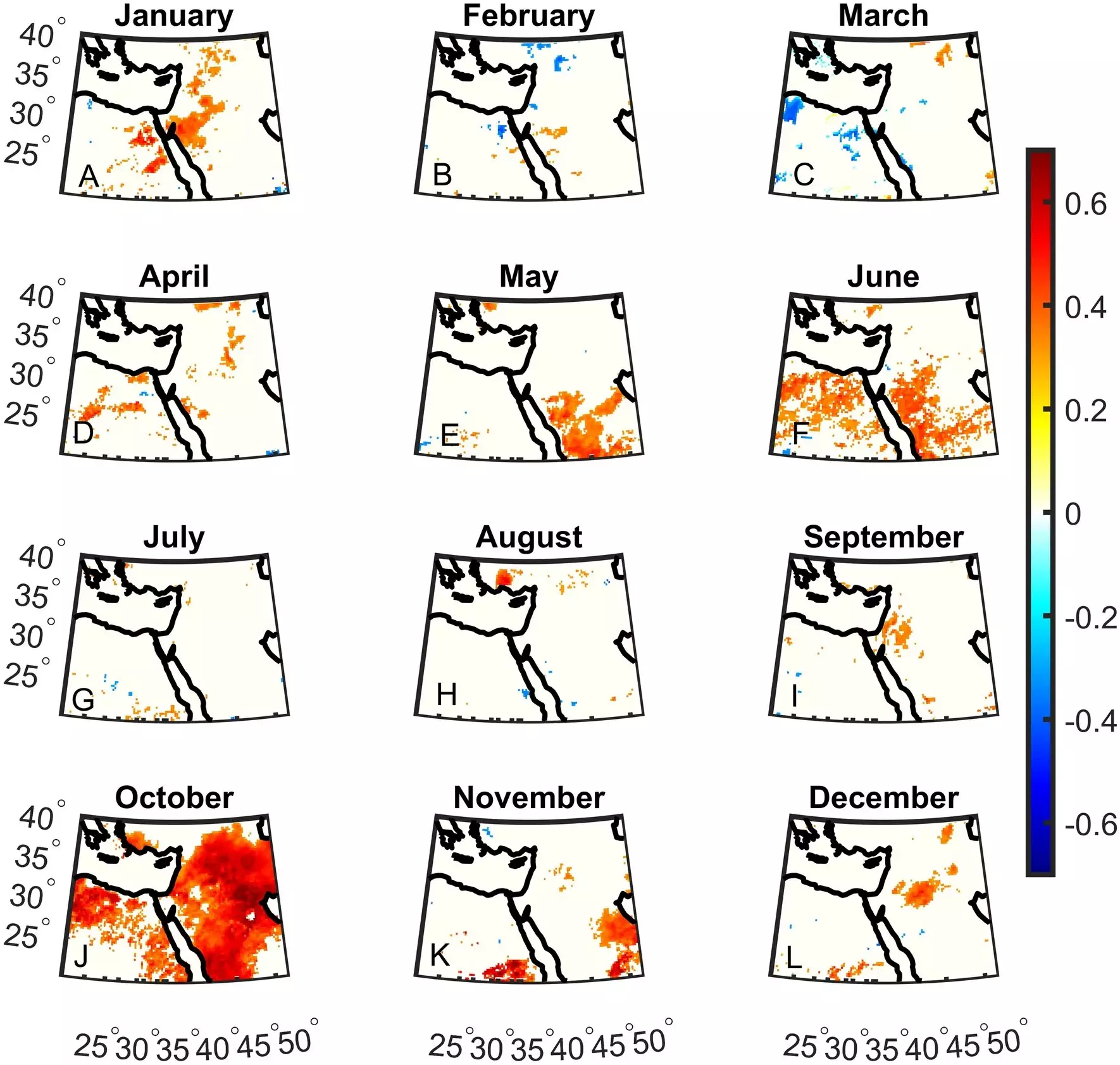A groundbreaking study led by Dr. Assaf Hochman from the Institute of Earth Sciences at the Hebrew University of Jerusalem has brought forth a fresh understanding of the intricate dynamics of sub-seasonal precipitation anomalies in the Middle East. This research, published in the esteemed journal Scientific Reports, unveils significant correlations between these anomalies and key climate indices, shedding light on the predictability of rainfall patterns that hold immense importance for both society and the environment.
The study’s insights into the evolving climate patterns in the Middle East hold profound implications for policymakers and stakeholders involved in managing water resources. Water scarcity concerns plague the region, making it imperative to have valuable information for planning and implementing effective water conservation and distribution strategies. By delving into the relationships between climate indices and sub-seasonal precipitation anomalies, this research equips decision-makers with the knowledge needed to navigate these challenges successfully.
Agriculture in the Middle East heavily relies on precipitation for irrigation, and its ability to adapt to changing rainfall patterns is crucial for sustainable farming practices. The study’s findings on sub-seasonal precipitation anomalies and their correlation with climate indices offer valuable insights that can assist farmers and agricultural policymakers in anticipating and adapting to these changes. With this knowledge, crop planning can be enhanced, and the potential impacts of extreme weather events on agriculture can be mitigated, bolstering the region’s overall agricultural resilience.
Drawing on careful analysis of October data, the researchers uncovered strong correlations between climate indices such as the Indian Ocean Dipole Mode Index and West Tropical Indian Ocean Index, and precipitation variability in the Middle East. These correlations were found to persist up to a two-month lag period, highlighting the significance of these indices in understanding and predicting precipitation patterns. Additionally, the study revealed a noteworthy increase of approximately 0.4°C in both the Indian Ocean Dipole Mode Index and West Tropical Indian Ocean Index over the past four decades, signaling an evolving climate system with potential regional consequences in the twenty-first century.
The research also identifies substantial correlations between the Indian Ocean Dipole Mode Index, West Tropical Indian Ocean Index, and maximum daily precipitation, emphasizing their role in extreme rainfall events. By attributing a significant portion of October’s precipitation variability to anomalies in Indian Ocean sea surface temperatures, the study demonstrates how these temperature fluctuations influence the Indian Ocean’s Walker circulation, consequently shaping regional precipitation patterns.
Read More: Unraveling the Complex Dynamics of Sub-Seasonal Precipitation Anomalies in the Middle East
Dr. Assaf Hochman, the lead researcher, emphasizes the importance of understanding the intricate ocean-atmosphere interactions and their implications for Middle Eastern climate variability. By elucidating the connections between climate indices and sub-seasonal precipitation anomalies, this study provides a foundation for improved prediction and adaptation strategies. These findings not only benefit academic circles but also carry immense value for policymakers, meteorologists, and stakeholders concerned with important aspects such as water resource management, agriculture, and disaster preparedness in the Middle East.
The study led by Dr. Assaf Hochman represents a significant step forward in unraveling the complex dynamics of sub-seasonal precipitation anomalies in the Middle East. By shining a light on the correlations between climate indices and rainfall patterns, this research equips stakeholders with the knowledge needed to make informed decisions and address the region’s challenges effectively. With these insights, policymakers, meteorologists, and agricultural experts can work towards developing sustainable strategies that will aid in the conservation of water resources, the resilience of agriculture, and the overall preparedness for climate-related events in the Middle East.


Leave a Reply